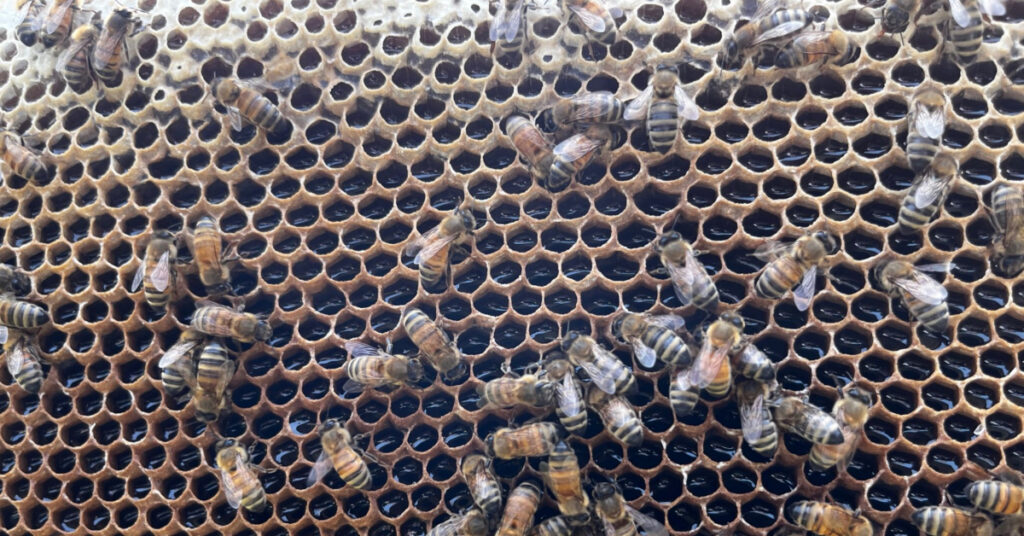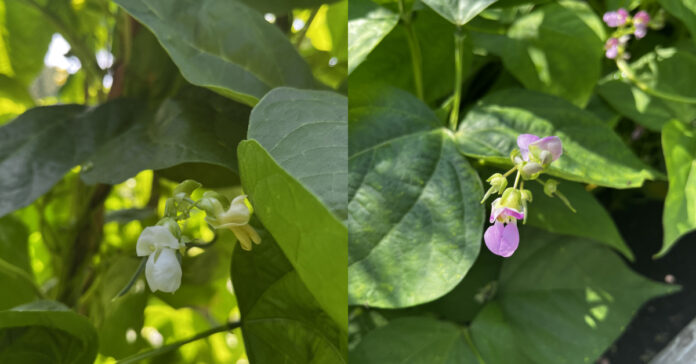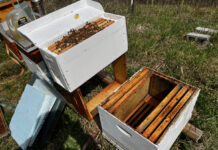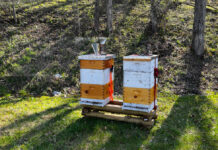Apparently, I am a slow learner.
Our electric fence has shocked me three times this year, including last week, which is more than in the prior two years combined. Because it is a powerful model rated for not just cows and sheep but for bear and moose, it gives quite a jolt. The shock is enough to make me swear and step back. Keep in mind that I’m getting shocked through my shirt and not on the nose. I don’t envy the bears, deer or other critters that run afoul of it. I can attest to its effectiveness.
When I shock myself, it’s usually because I am leaning over the fence to do something for the chickens and I forget the fence is electrified. Zap! That jolt is an instant memory refresher, and a lesson that will stick with me for at least the next ten minutes while the shadow of the jolt lingers on my belly. Still, that’s better than getting stung by a bee, which lasts 48 hours.
My belly is admittedly larger than it was 20 or 30 years ago, and my mind may not realize it is sticking out far enough to get zapped by the fence. Perhaps this kind of shock therapy will make me lose a few pounds and tighten up my gut.
Down Two
We have now lost two of our new chickens. Instead of being killed by predators, they have been pecked to death by the adult chickens. We are not intentionally intermixing the new hens, who are about 13 weeks old, with the existing flock, but the new ones flying over the fence to visit the big chickens and then are unable to get back into their side of the run. I’m not sure why the adults are ganging up on them. I tend to blame the roosters, but I have heard it can be the hens as well.
One night, when I was walking the dog well after dark, I spotted a young chicken balancing on the top of the welded wire fence as far away from her side of the chicken run as possible. I gathered her up and put her back to be in her own pen. (Chickens are much easier to catch and handle after dark than they are during the day.)
Another night, I counted only seven of them in their roost, so I opened the main coop and looked for the missing bird. She was in one of the nesting boxes. My guess is that the adult birds would not let her on “their” roosts. At least she was uninjured. I grabbed her and returned her to her coop.
Full integration of the two flocks will have to wait another month or two until these guys are big enough to better defend themselves. I think next year, I will have to provide a better coop for the younger chickens. That may be a winter woodworking project.
The Honey Flow is On!
Two weeks ago, we didn’t have enough honey in the hives to bother with a harvest. On Sunday, we had six or seven supers across four hives that were at least 75 percent full. While almost none of the honey was capped, I was happy to see fresh white wax, newly drawn combs, and plenty of glistening nectar in the honeycomb.
What a difference some warm weather and some blooms make. Now I just have to hope the flow continues and we can make honey for a few more weeks. If we continue at this rate, we could exceed 200 pounds again.

I’m not sure what flowers are providing nectar. We have numerous wild flowers blooming in our meadow, including bee balm, asters, black-eyed Susans, and other cone flowers. I have seen a few honey bees on clover, but more of them are feasting on Japanese knotweed, which is an invasive plant. My wife has killed it off on our land, but there is so much growing along the stream and the up and down the road that there is no shortage in the area. The bees like it.
We also have a couple of sumac varieties, and some years the bees will make sumac honey. We should have basswood blooming soon, but I have not seen it do so yet. The problem with trees is that the blooms are often so high, we can’t see when the bees are visiting them. Also, bees will fly a mile or more to gather nectar, so the trees could be anywhere on the mountain.
Making Room
Out of my seven hives, I added additional supers to four to give them room to make more honey. I now have two hives with three supers, three hives with two supers, one with one super, and one hive with none. That’s the hive that has been queenless and is struggling. I am considering combining it with another hive and reverting to six hives for the winter. At its current rate, it’s unlikely that hive will grow strong enough to survive the winter on its own.
I have enough equipment to add one additional super to each hive, but I have run out of drawn comb. This means the next supers will be empty frames without comb. In the current supers, I have included four new frames intermixed between five frames of drawn comb. This gives the bees space to fill immediately while the younger bees make new comb. The benefit of having new comb is that I can use it again next year to give the bees a head start in honey production.
Next year, I am going to focus on growing my bee yard with some additional splits in the early spring. I’d like to have nine or ten hives.
Peak Production
We have harvested our first zucchini, and based on the blossoms, there will be many more in the future. The peppers, peas and the string beans are blooming. We are growing bush beans and climbing peas and the peas have just exploded. In just the past week, I have added two new poles for them to climb on. I think next year we will try climbing beans instead of the bush variety. They should produce more and since they grow vertically, it will be an efficient use of space.
The garden isn’t the only greenery that’s benefiting from the weather. For example, the blackberries are ripening. In a survival situation, I would eat them now, but I know they are still sour and will be sweeter in a few days, so I am holding off. We have been picking quarts of blueberries for two weeks.
This is the start of the two months in which the plants in our garden and the wild ones all around us will enter peak production. In a survival scenario, we would be eating our fill, hoping to pack on enough weight to get through the winter. After the garden dwindles, we will have apples and then hunting season. That’s the last opportunity to lay in a supply of food for the winter.
Every year we practice, we get better at producing our own food. It’s a nice addition to our meals, but I living that way full time would be a serious hardship.







